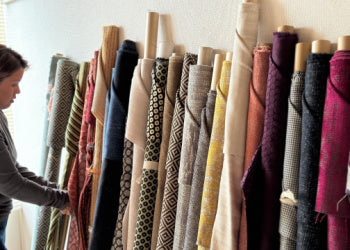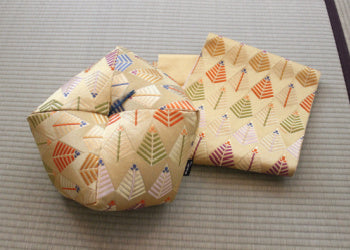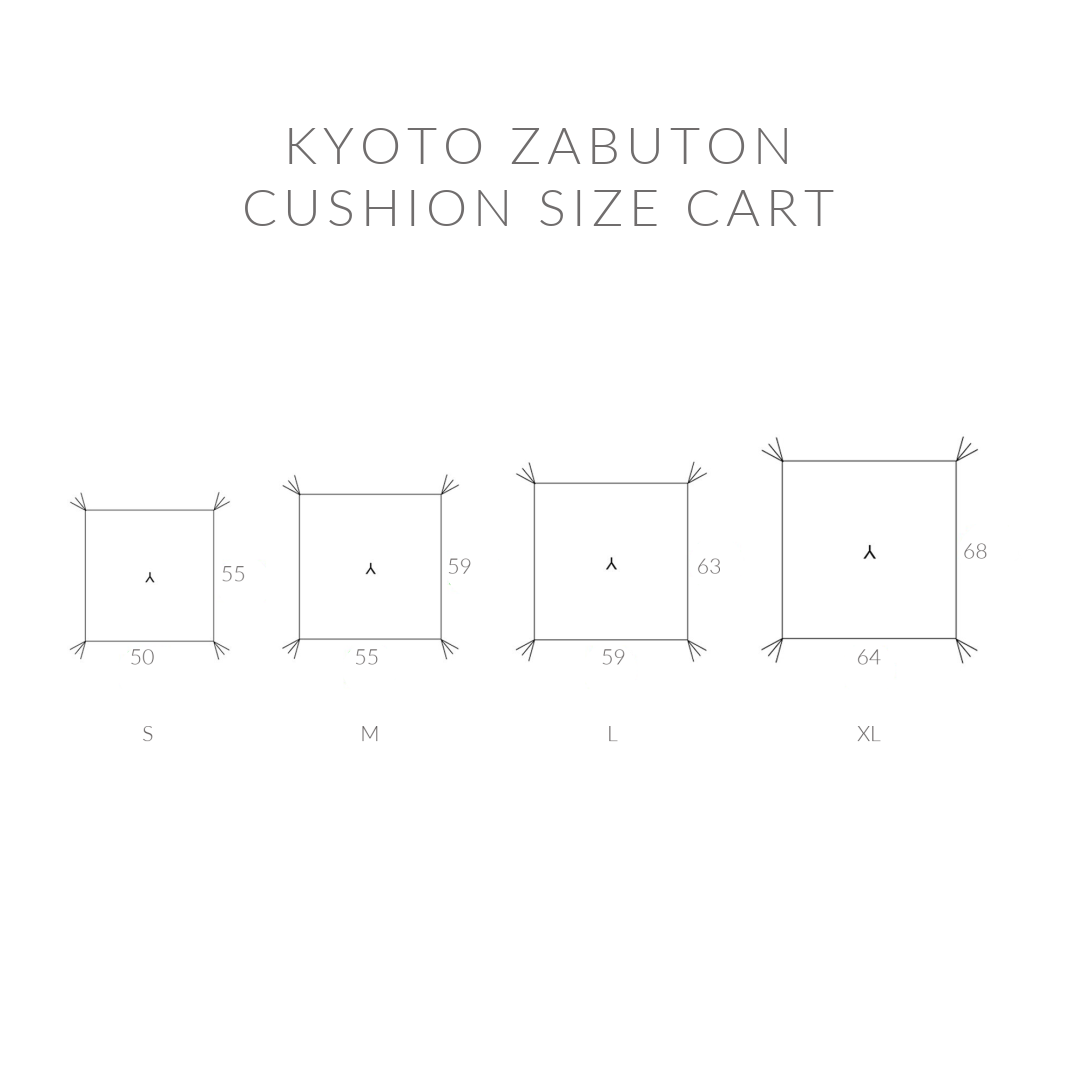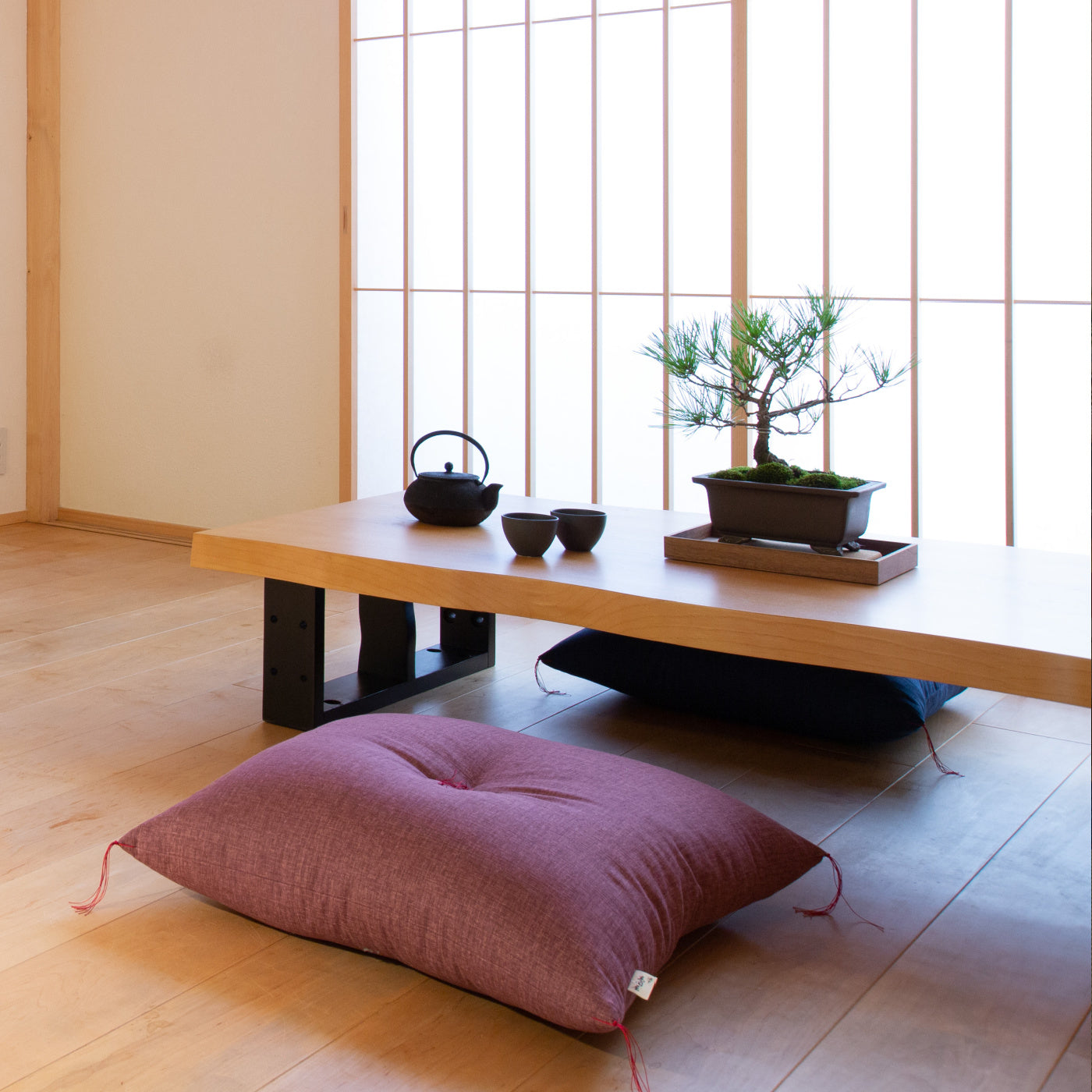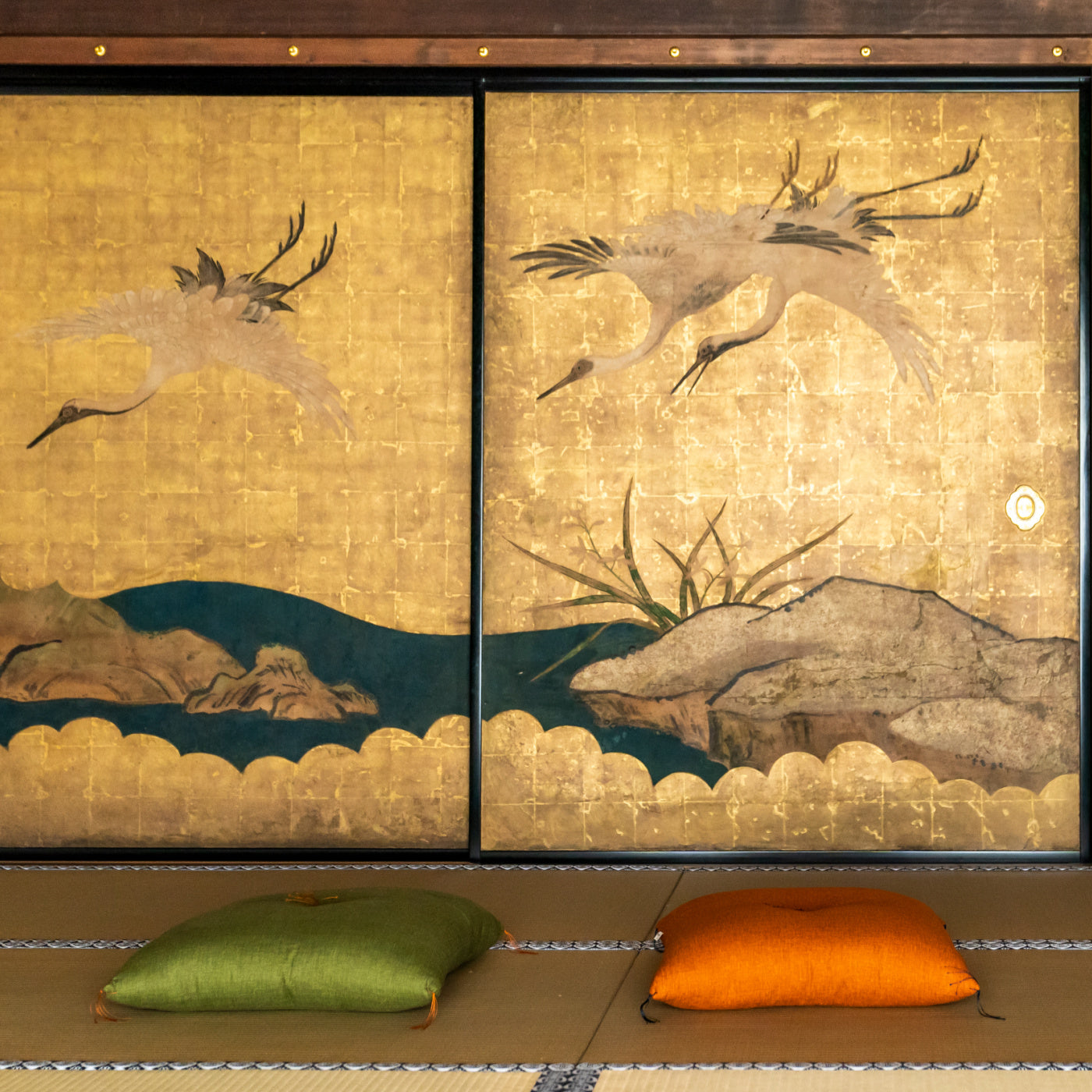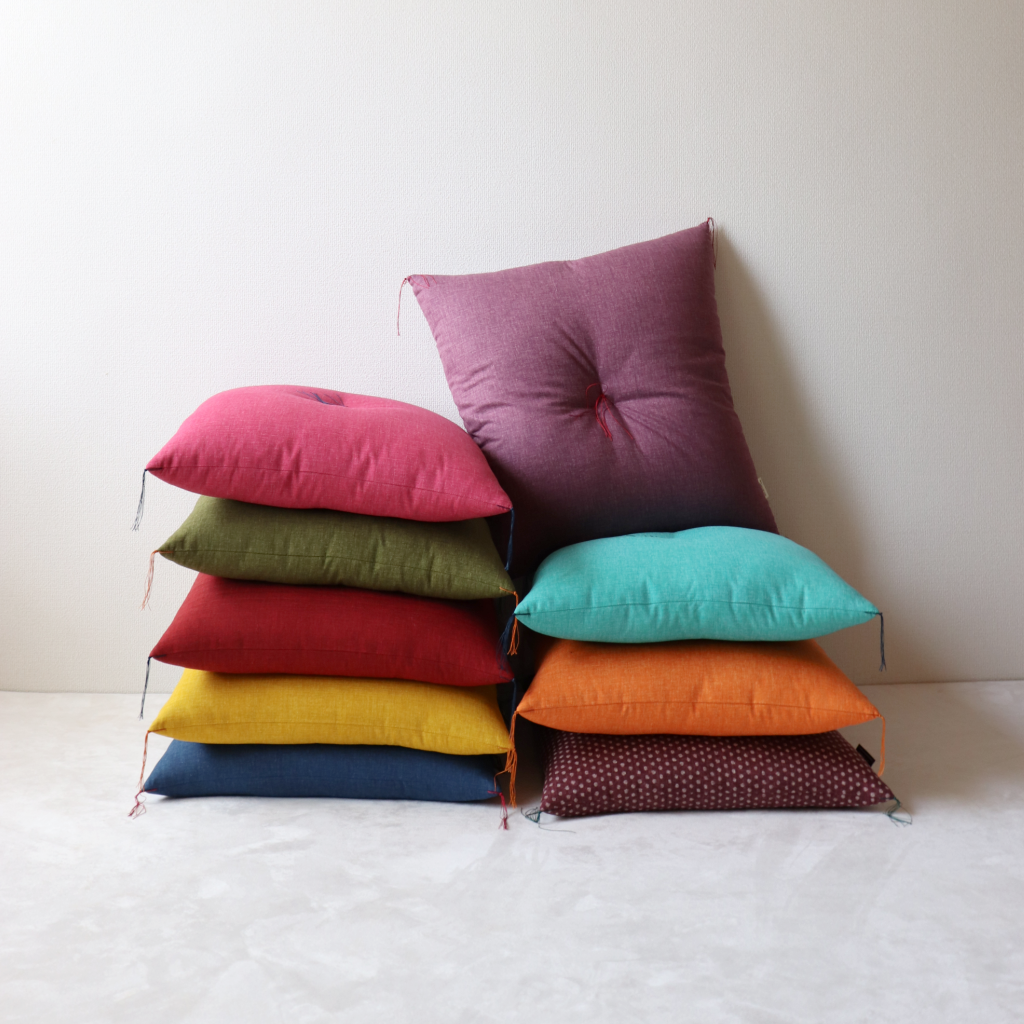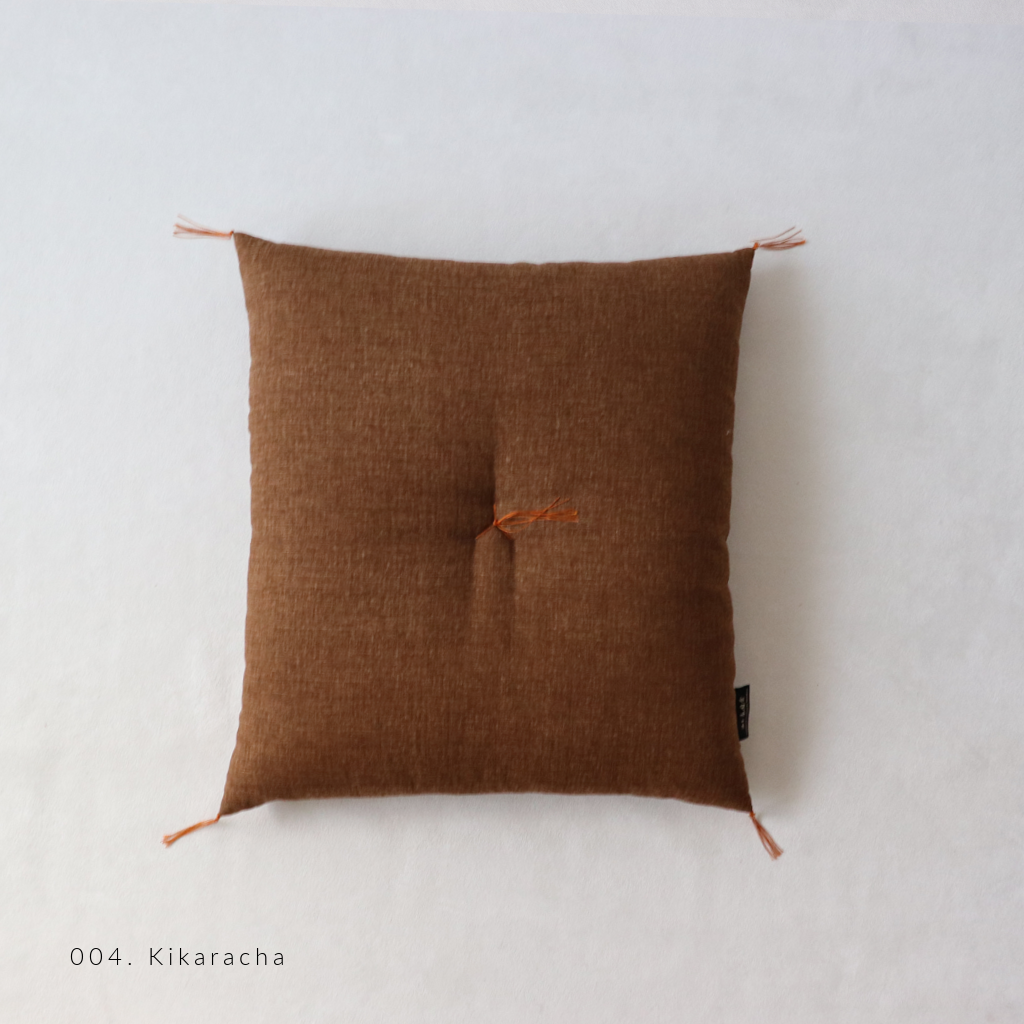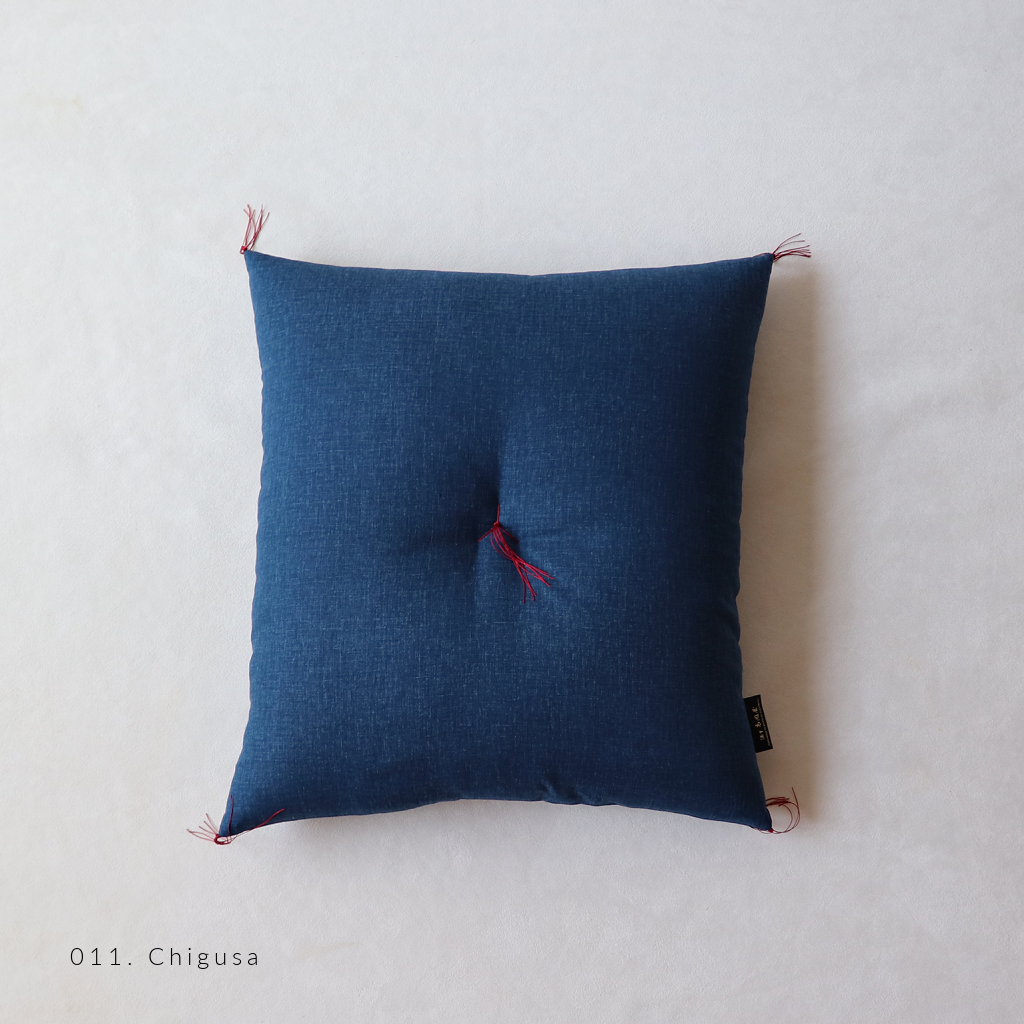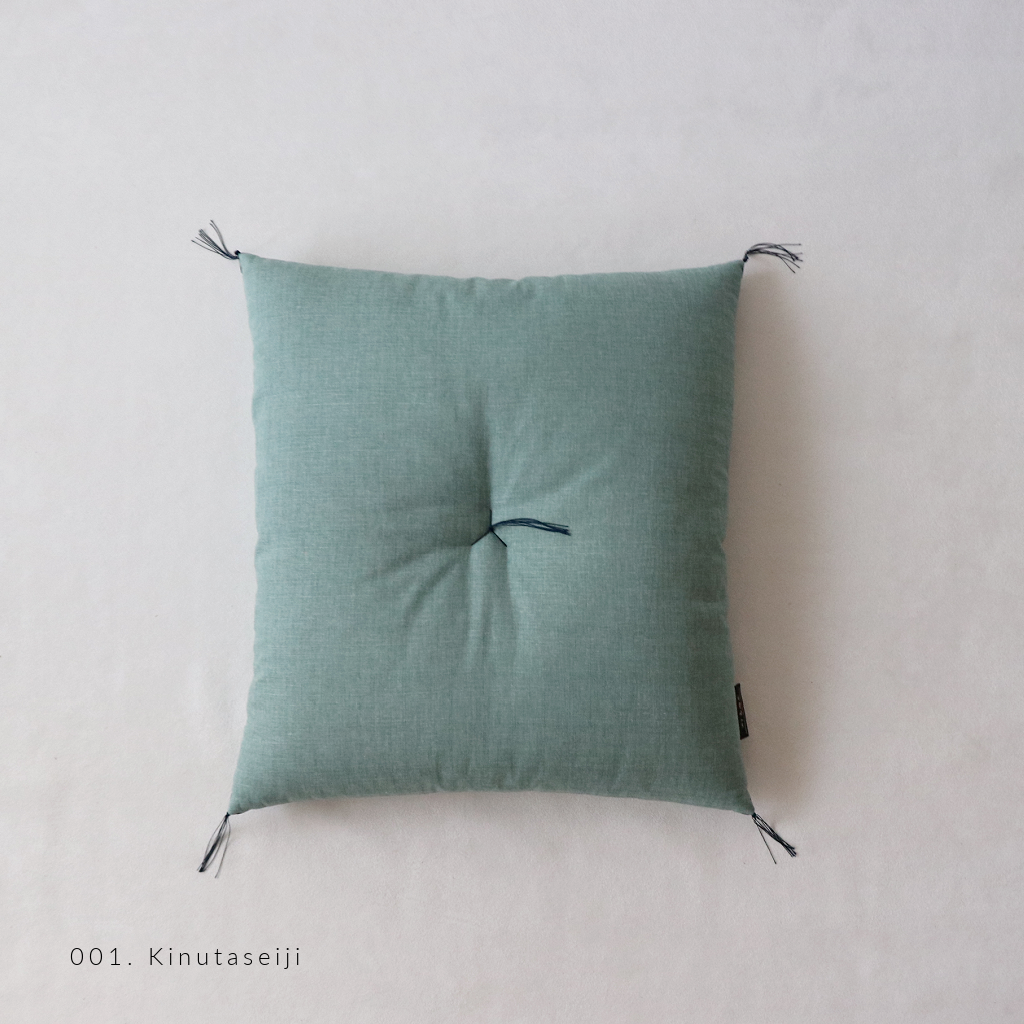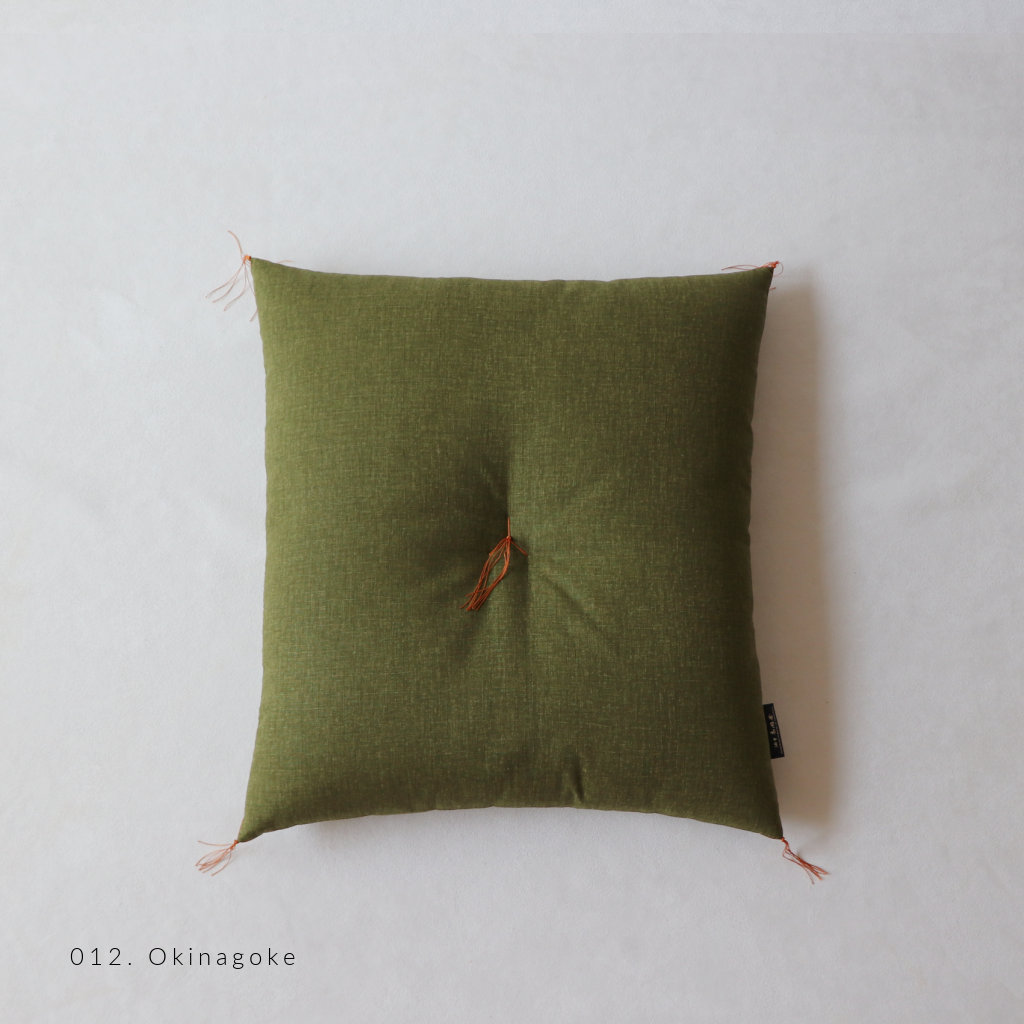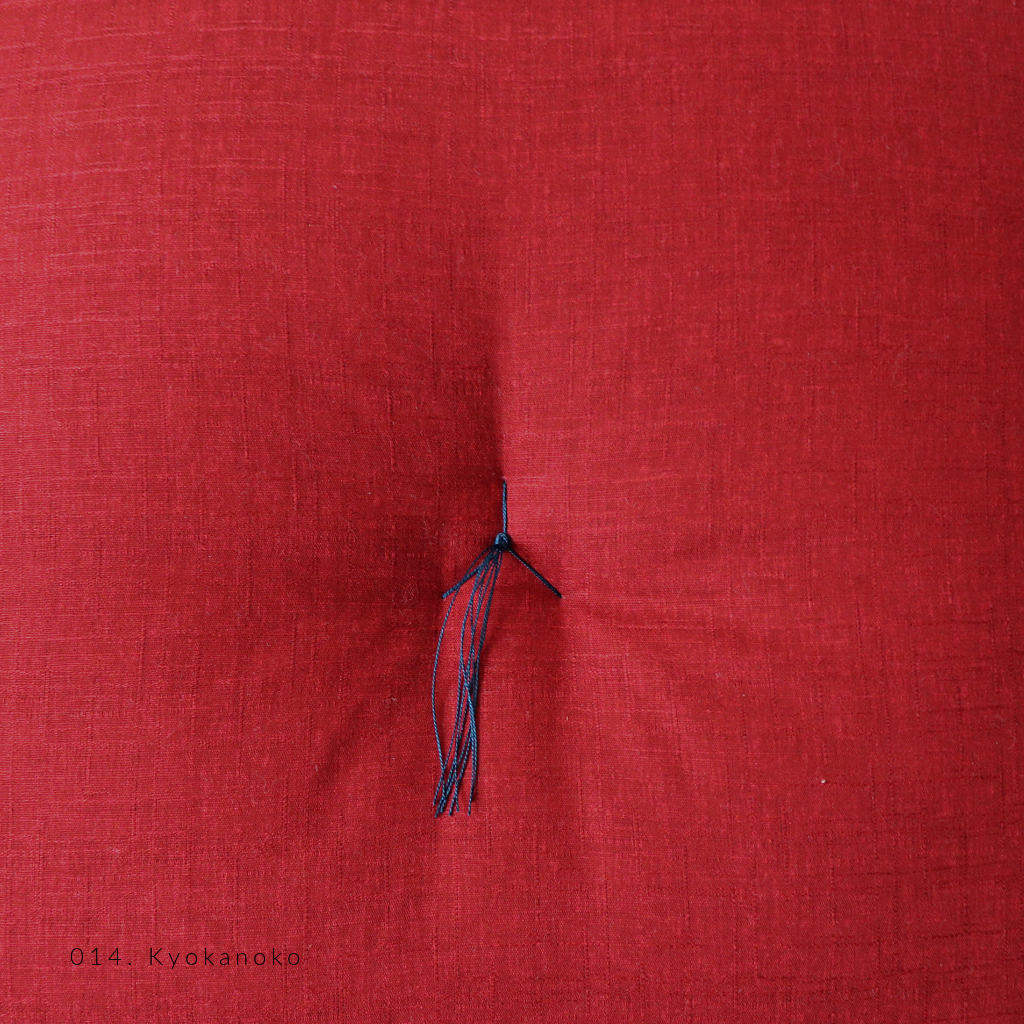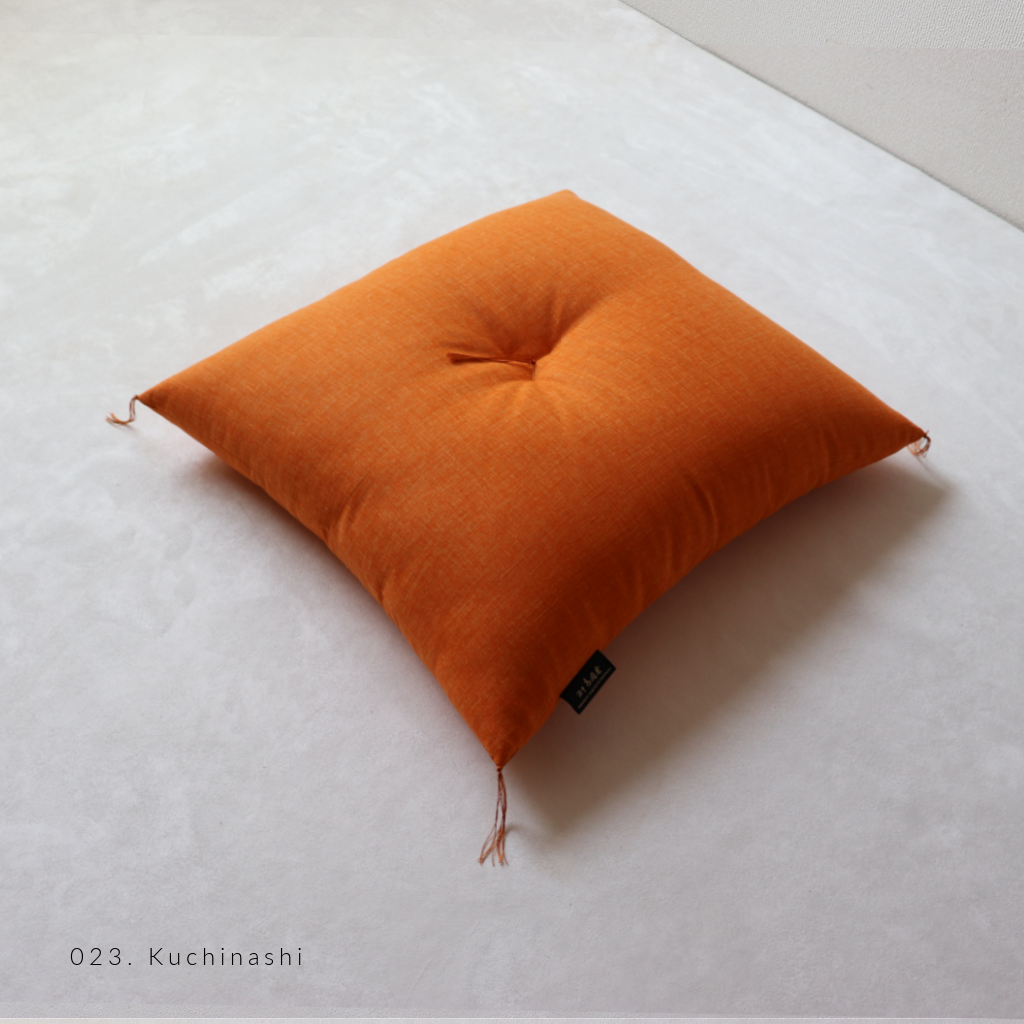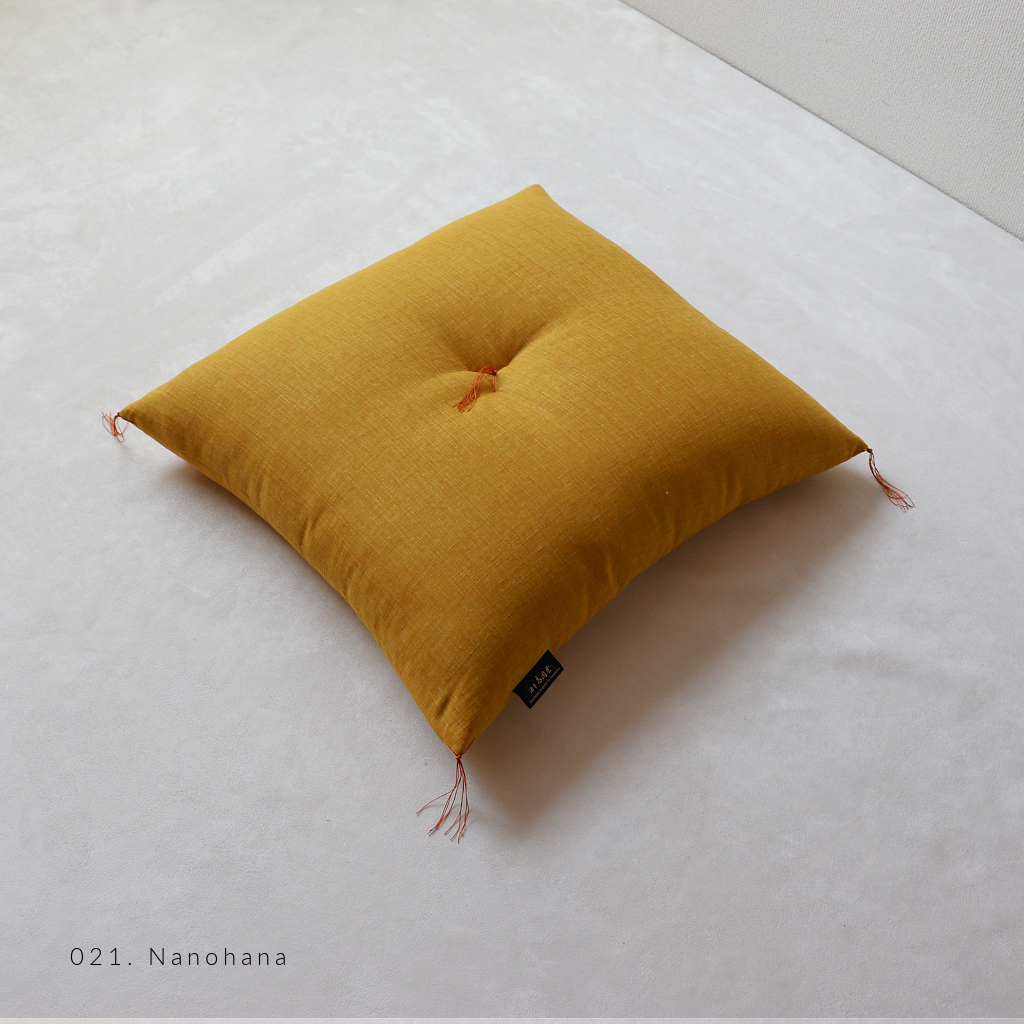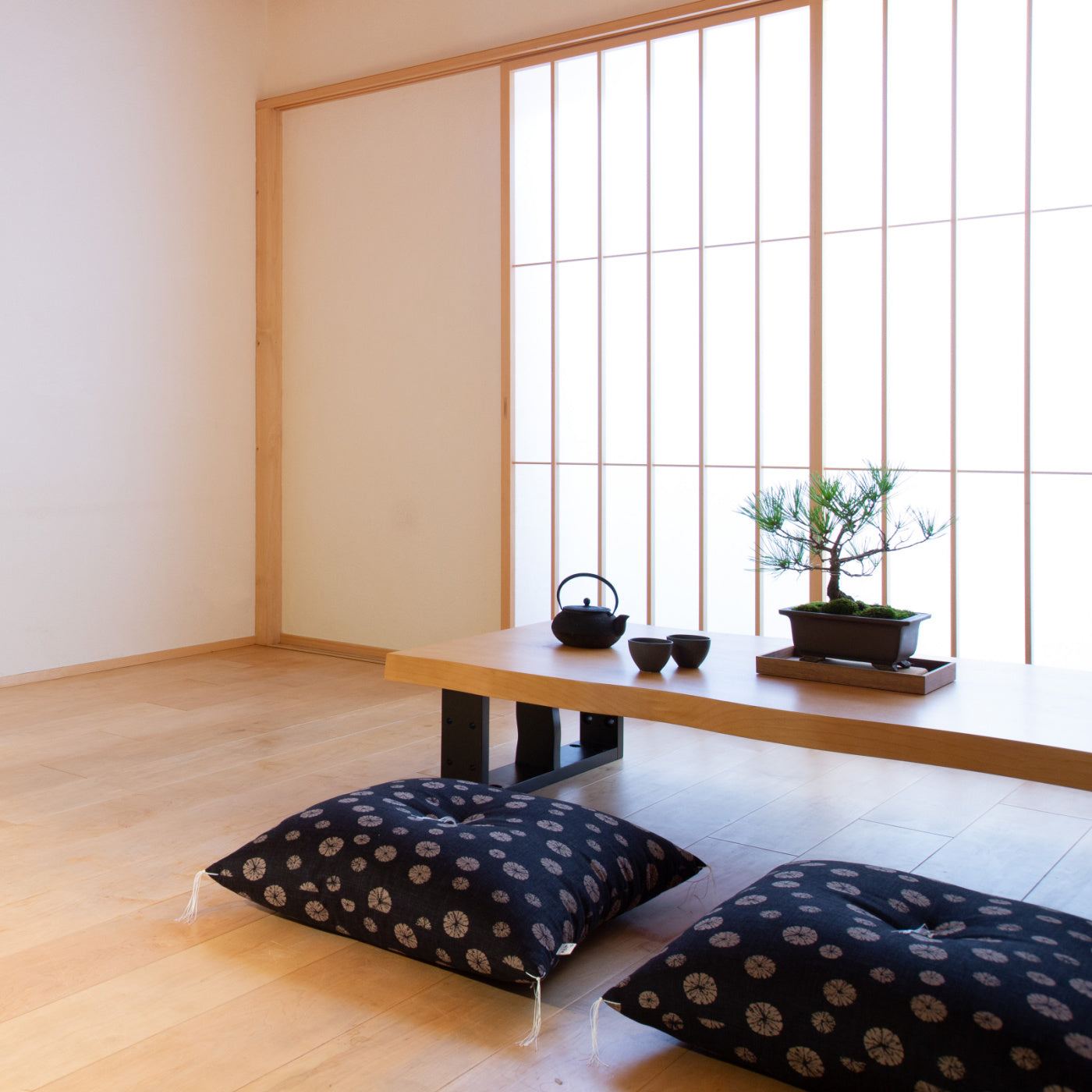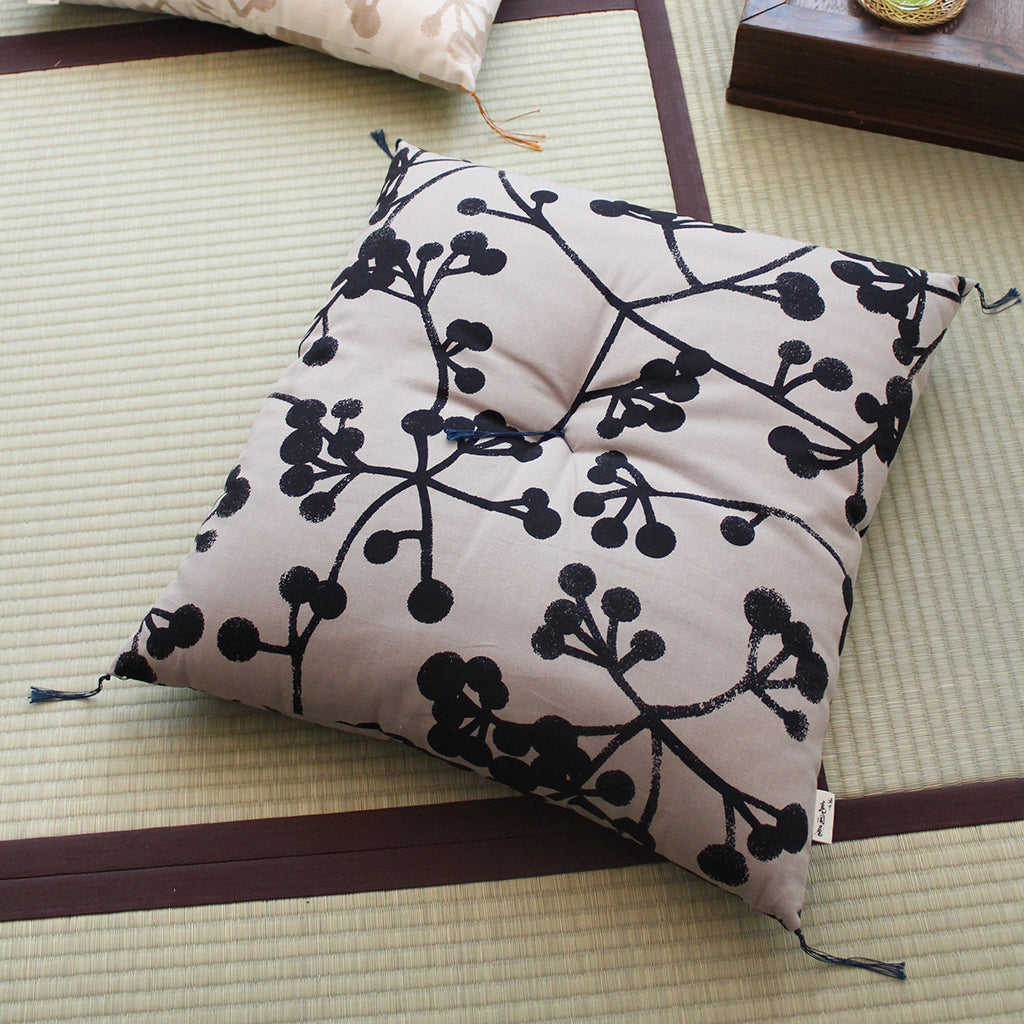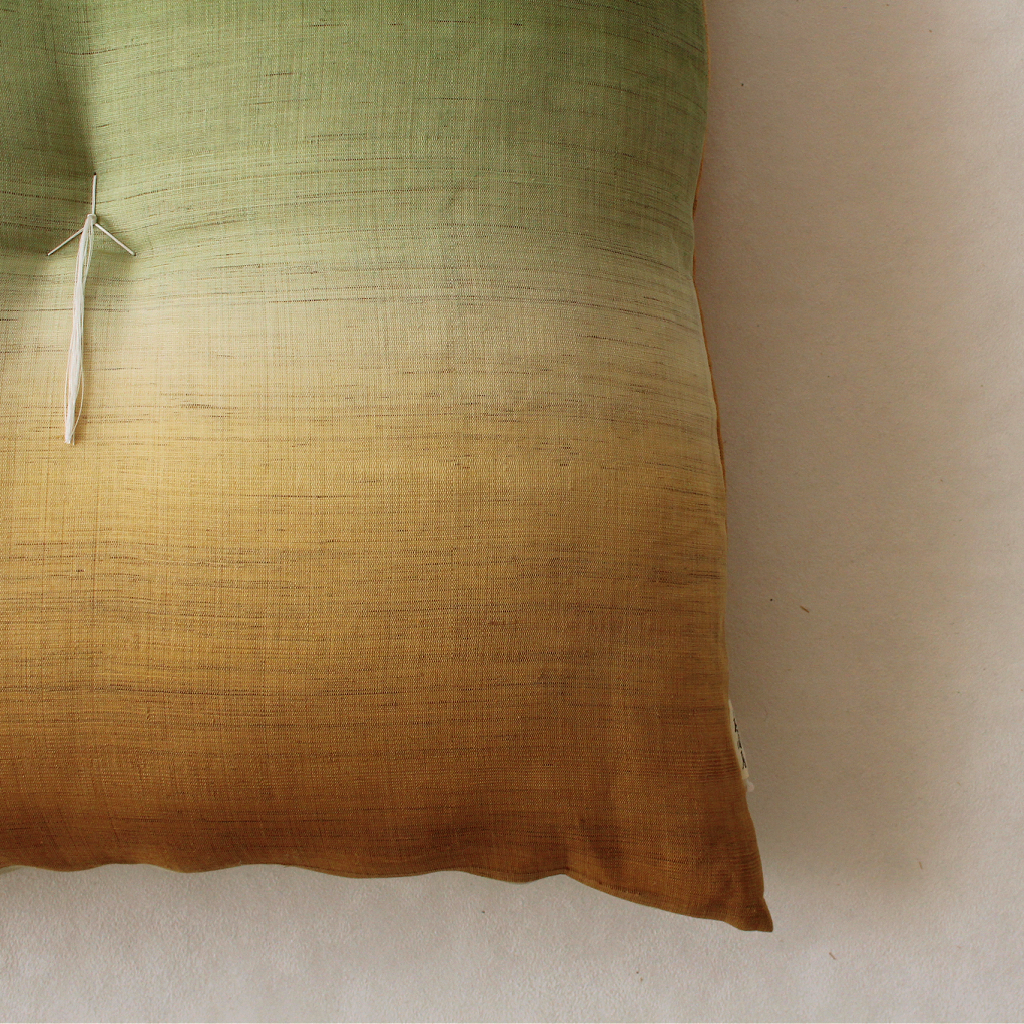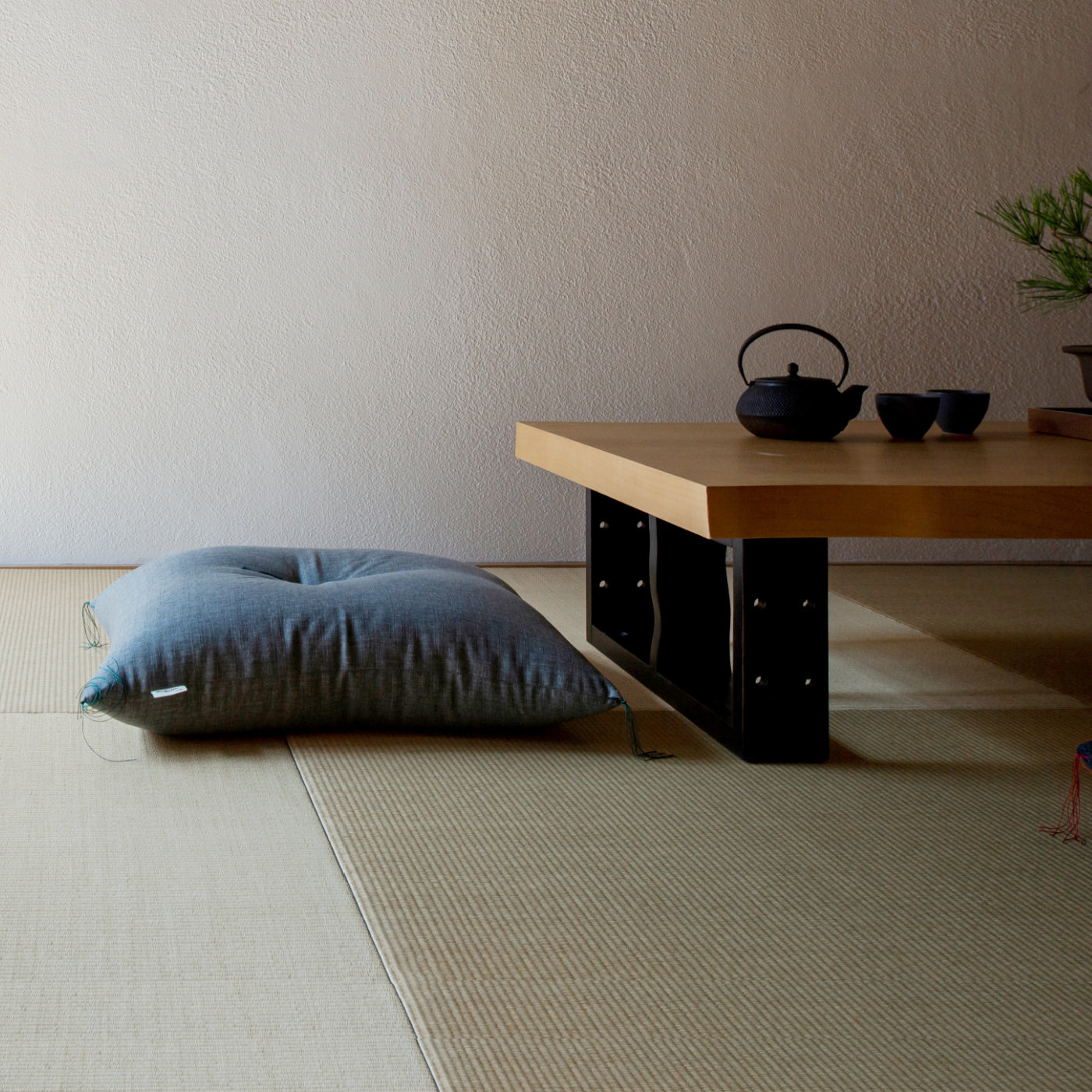
This store requires javascript to be enabled for some features to work correctly.
modern living with a piece of inherited Japanese hospitality
From being a seat adornment that symbolizes a person’s royal or high status nearly 1000 years ago, Zabutons are now used daily for floor seating to provide comfort and relaxation in modern Japanese households or used for meditation to increase mindfulness.
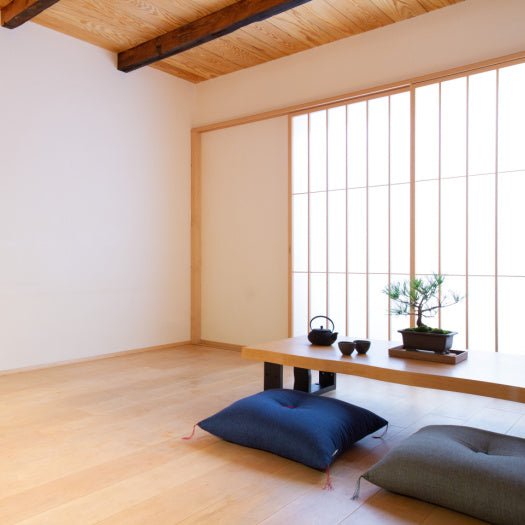
OMOTENASHI HOSPITALITY
Give a warm welcome to guests who visit your home by giving them your best cushions to rest and relax on
Give a warm welcome to guests who visit your home by giving them your best cushions to rest and relax on
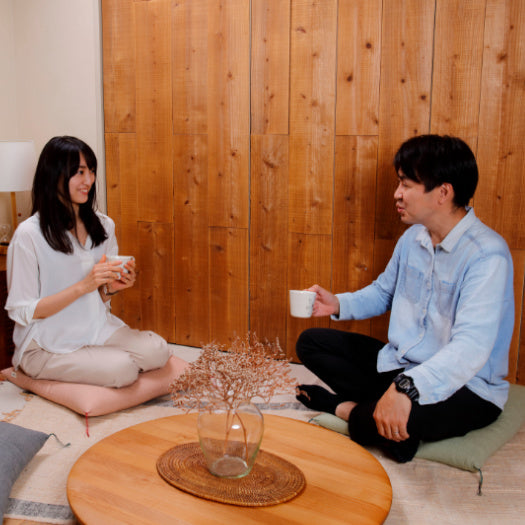
DAILY RELAXATION
Relax at home with your favorite zabuton cushion
Relax at home with your favorite zabuton cushion
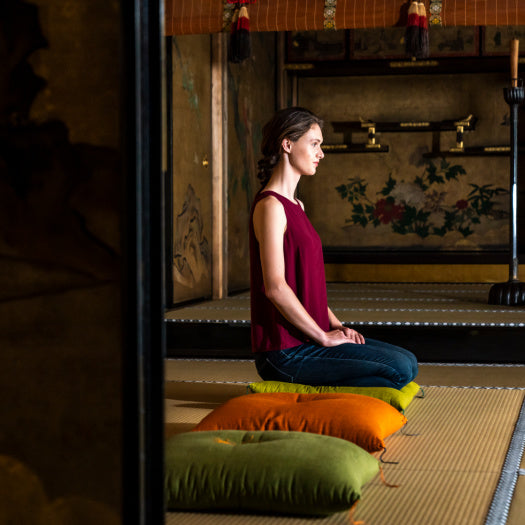
MEDITATION
Practice self-care and mindfulness to reduce stress and regain a sense of calm and peace
Practice self-care and mindfulness to reduce stress and regain a sense of calm and peace
Why can we relax so well?
The Importance of Our Craftsmen
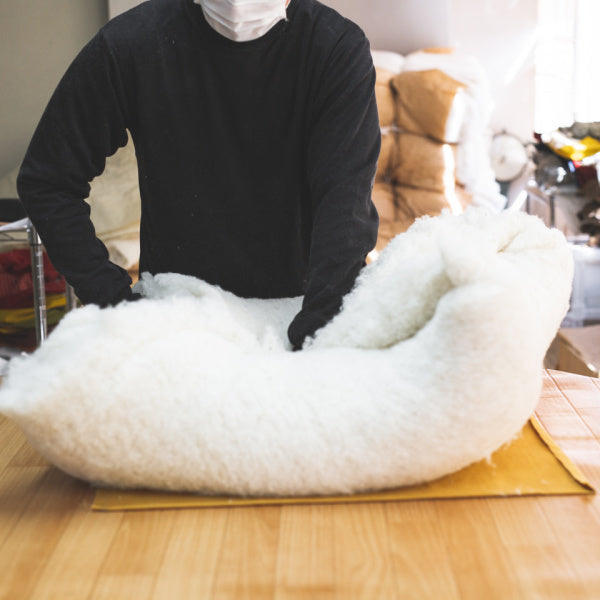
The secret of relaxation
Stuffing by skillful craftsmen
The stuffing stage is one of the most important parts of the production process. It does not only determine the comfort level of the finished products, but it is also what allows the product to keep its integrity even with frequent use. The zabuton has a large amount of filling in the center part where the weight is applied. Our skilled craftsmen are concerned with the longevity of their creations, so they would like to make sure that even in the future, each product is still as comfortable as the day it was made.
The craftsman's experience and care of "thinking about the user and putting inner filling", which cannot be achieved by machine production, create "comfort" and "relaxation".
“Omotenashi”: The Spirit of Kyoto hospitality
Three Characteristics of Kyoto Zabuton
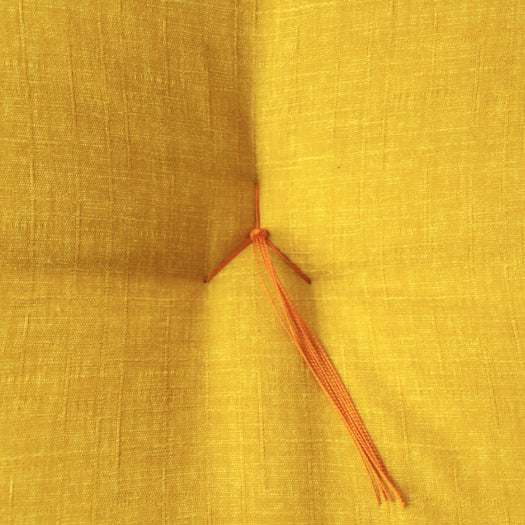
”Sampo-toji”: Three-pronged stitch
The three-pronged stitch on the top of a zabuton, known as “toji,” has the function of keeping the cotton evenly distributed. Most Zabuton cushions use a “toji” in the shape of a cross, but our Kyoto Zabuton cushions use the three-pronged stitch as shown in the picture. The tail of the “Y” indicates the front of the Zabuton, so that when you serve the Zabuton to your guest, you know which is the right direction to place the Zabuton by looking at this stitch.
The three-pronged stitch on the top of a zabuton, known as “toji,” has the function of keeping the cotton evenly distributed. Most Zabuton cushions use a “toji” in the shape of a cross, but our Kyoto Zabuton cushions use the three-pronged stitch as shown in the picture. The tail of the “Y” indicates the front of the Zabuton, so that when you serve the Zabuton to your guest, you know which is the right direction to place the Zabuton by looking at this stitch.
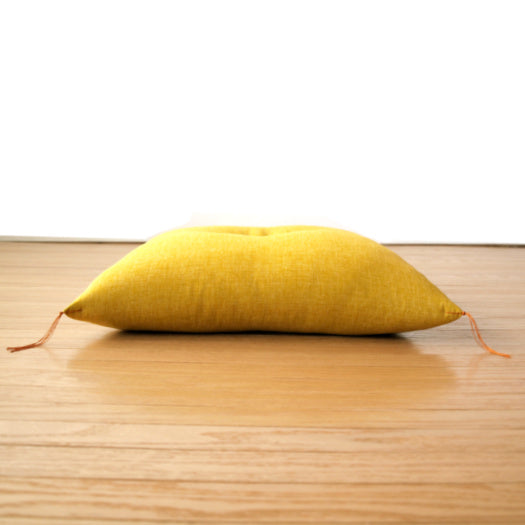
”Kamaboko-gata”: Dome shape
The underside of the zabuton cushion is flat, which ensures the stability of the cushion. However, the top side of the zabuton is filled to create a dome-like shape, which is reminiscent of the shape of a Japanese fishcake called kamaboko. This shape does not only provides fluff, but it also prevents the zabuton cushion from thinning too quickly, even with frequent use. The plump and natural curve shape of the zabuton cushion is an indication of the skill possessed by the maker.
The underside of the zabuton cushion is flat, which ensures the stability of the cushion. However, the top side of the zabuton is filled to create a dome-like shape, which is reminiscent of the shape of a Japanese fishcake called kamaboko. This shape does not only provides fluff, but it also prevents the zabuton cushion from thinning too quickly, even with frequent use. The plump and natural curve shape of the zabuton cushion is an indication of the skill possessed by the maker.
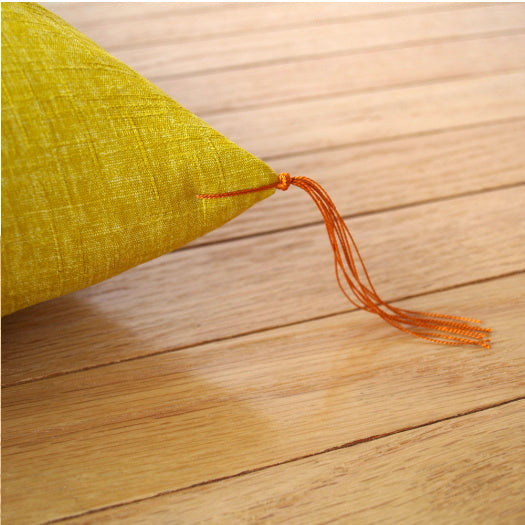
”Sumi-fusa”: Tasselled Corners
The corner tassel stitches on a zabuton cushion are called “sumi-fusa”. It does not only function as a decoration, but it is also a traditional technique used to make sure that the cotton filling does not come out from the corners of the cushion. In ancient Japan, it is believed that putting tassels on the corners of the cushions prevents evil from possessing the user.
The corner tassel stitches on a zabuton cushion are called “sumi-fusa”. It does not only function as a decoration, but it is also a traditional technique used to make sure that the cotton filling does not come out from the corners of the cushion. In ancient Japan, it is believed that putting tassels on the corners of the cushions prevents evil from possessing the user.
Create with takaokaya's craftsmen
Solid? Japanese? Nordic?
which color or pattern do you like?
More About Product
Product Description
[Sizes (approx.)] S (50×55 cm), M (55×59 cm), L (59×63 cm), XL (64×68 cm)
[Fabric] 100% Cotton
[Filling] 100% Cotton
[Tassel] 100% Silk
[Filling weight] S: 1.0kg / M:1.2kg / L:1.4kg / XL:1.6kg
Color
This product's page is "kyoto zabuton cushion | solid color". The color can be selected from Solid colors from our cotton collection. Please check colors from our cotton fabric sample. >>>SEE SAMPLE
The cushions are elegant and soft, and you can tell they're handmade, using high-quality materials. I'm very satisfied with the purchase.
Thank you so much for the review, Giulio! It makes us happy to hear you're pleased with your Kyoto Zabuton and we hope it brings you comfort for many years to come!
Happy Kutsurogi!
Alex,
Team Takaokaya
The two Kyoto Zabuton Cushions I ordered are simply outstanding. Their craftsmanship is exceptional—each pillow is clearly handmade with great care and attention to detail. The sleek and natural design fits perfectly into our modern home, giving the space both comfort and style. These pillows are wonderfully comfortable and have made sitting on the floor a truly inviting experience.
It’s obvious that Takaokaya takes tremendous pride in their products—the package even included a thoughtfully personalized handwritten note, which was a very special touch. Thank you to Takaokaya for offering such high-quality, unique items that are not always easy to find. I highly recommend these pillows to anyone seeking comfort, beauty, and genuine artistry in their home décor.
We are thankful for this 5* review on our Zabuton cushions, Rune. Nothing makes us happier knowing that our handcrafted Kangu, are well appreciated for their craftsmanship and comfort, and that they bring rest and relaxation for the owners,while elevating their spaces.
Happy Kutsurogi,
Valery
Team Takaokaya
We bought our first two zabuton a year ago and have been very pleased. They are exactly as pictured and quality material. The only "problem" was that our cat decided they were his favourite seat, too - so we've now bought a third zabuton so we can all enjoy using them together. (=^•^=)
I was also very happy to receive the cojami filled with natural buckwheat.
Thank you Roxy for returning to the store! It's always such a joy for us to have customers coming back!
You made a wise move to get the cat his own Zabuton so he will stop invading your comfort zone of handcrafted Zabuton. :)
Happy Kutsurogi All,
Valery
Team Takaokaya
I couldn’t have asked for a better cushion. It looks wonderful, feels nice, and is a joy to sit on.
Thank you Mark for rating our Kyoto Zabuton 5*.
It's great that you find it a joy to sit on.
Please enjoy it for a long time!
Happy Kutsurogi,
Valery
Team Takaokaya
Love them!
Glad you love them Laura!
Happy Kutsurogi,
Valery
Team Takaokaya

